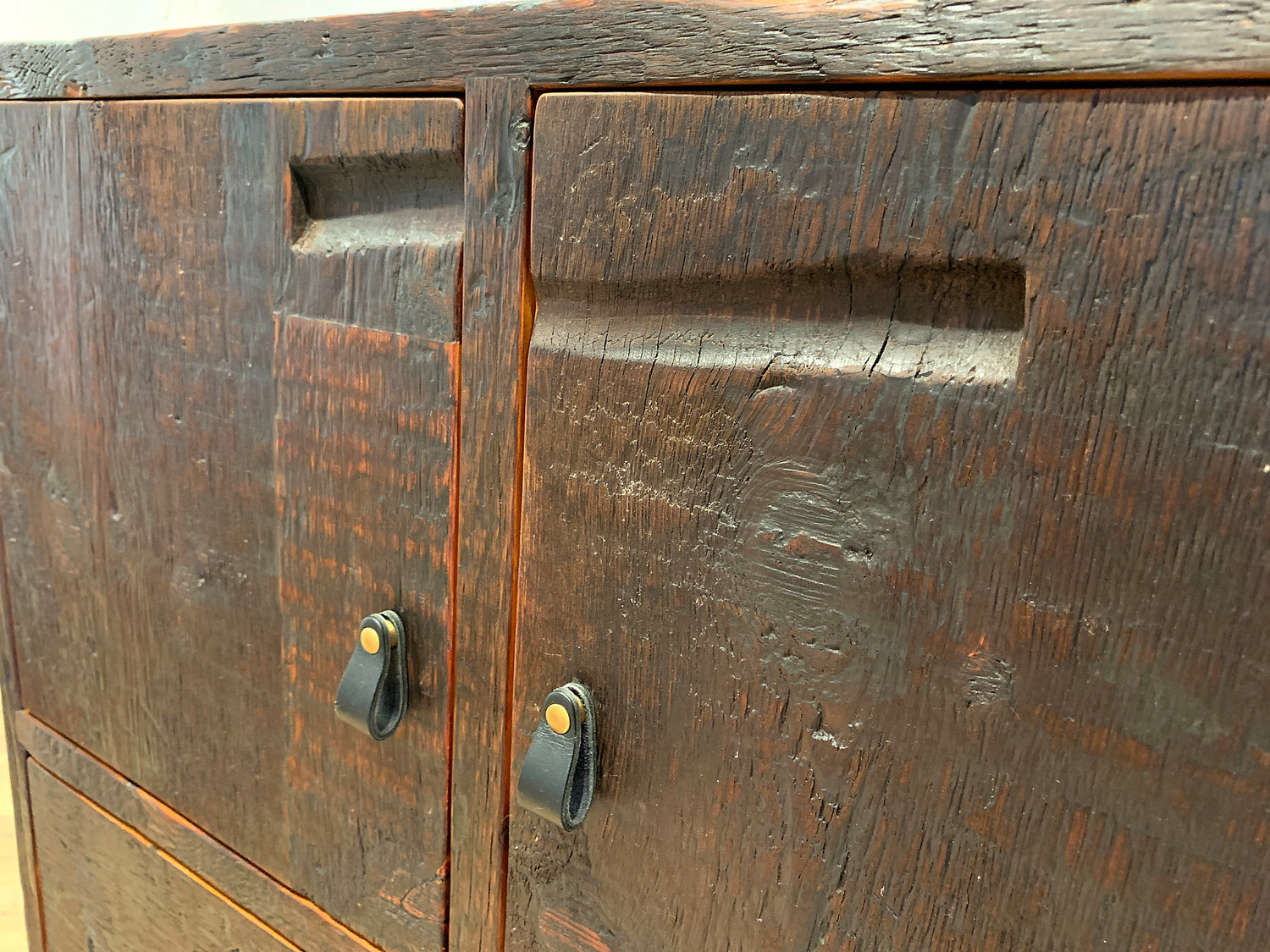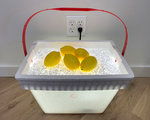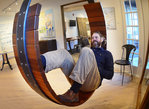Local artist finding beauty in reusing
Artist Jeff Soderbergh proves that art can be both high-end and sustainable
The showroom and gallery inside Jeff Soderbergh’s new studio at 549 Park Ave. in Portsmouth is bright and airy, intimately sized but expertly outfitted with only a few select, show-stopping …
This item is available in full to subscribers.
Please log in to continue |
Register to post eventsIf you'd like to post an event to our calendar, you can create a free account by clicking here. Note that free accounts do not have access to our subscriber-only content. |
Day pass subscribers
Are you a day pass subscriber who needs to log in? Click here to continue.
Local artist finding beauty in reusing
Artist Jeff Soderbergh proves that art can be both high-end and sustainable
The showroom and gallery inside Jeff Soderbergh’s new studio at 549 Park Ave. in Portsmouth is bright and airy, intimately sized but expertly outfitted with only a few select, show-stopping pieces. Near the entrance suspends the whimsical Soderbergh Ring Chair — a tempting distraction for both children and adults.
On the wall opposite, a 3D sculpture of an owl’s profile appears to beadily watch visitors as they browse the collection of furniture before them, from wooden benches and side tables with delicate, imperfect curves to clean-cut dining room tables with naturally-plaid designs. Abstract, contemporary wall art lines the room, while quirky light installations surprise at varying corners.
As captivating as each individual piece might be, every one, upon closer inspection, has a deeper story to tell. Wood platting the ring chair derives from a mahogany sailboat; the owl’s head is comprised of small, discarded children’s toys. Floorboards from 1940s-era Chicago freight cars helped frame the plaid table’s design; what appeared to be oil paintings at first are instead collections of house paint and plaster.
Welcome to the Jeff Soderbergh Gallery — where fine art and furnishings meet sustainability.
Creating a green gallery
A renowned craftsman based in Middletown, Mr. Soderbergh has had his furnishings featured in the likes of Elle Décor, Architectural Digest and New England Magazine. Yet his transition from making wall assemblages into this new industry began accidentally, born out of a need for a coffee table in his apartment nearly 30 years ago. Instead of buying one, Mr. Soderbergh decided he himself would try to make it, heading to the library to learn how.
The experiment proved successful, and people began commenting on his work. Before long, Mr. Soderbergh was trucking his furniture designs off to various trade shows, from Chicago to New York City.
“That is what my career has been; just a series of little stumbles that turned into a run,” Mr. Soderbergh said.
Lugging his heavy, large-scale pieces across the country, however, was cumbersome, and by 2011 he decided he had had enough. He opened a seasonal gallery in Wellfleet on the Cape, in a space located directly below his wife Natasha’s Karol Richardson shop.
Yet Mr. Soderbergh’s workshop was still located back in his two-story barn on Aquidneck Island — a spot that, though generously sized, was ill-configured for his line of work. He needed a place that could serve as everything — a gallery, showroom, office and studio — as well as be properly zoned. For 20 years, he had his eye on the Park Avenue property, but it was not until February of 2019 that the site finally became his.
Though it may have been Mr. Soderbergh’s dream building, the space, at the time, was hardly in perfect shape. Originally constructed as two separate properties back in the 1920s, the site was last home to a veterinary tech supply company, complete with a call center, carpeting and tangle of wires.
“It was this whole architectural mystery as to why it was the way it was,” Mr. Soderbergh said.
A complete renovation
Together with his assistant Jon Zins, the pair spent the better part of last year completely gutting the property’s interior. They exposed two drop ceilings and beams in what would become the gallery and showroom space; lined the main entryway with the flipside of those same Chicago freight car floorboards. Wood salvaged from a fallen Ocean Drive beech tree became the sink countertop in the public restroom. Every inch of the 2,000-square-foot public-facing space was designed with purpose, a true testament to how Mr. Soderbergh approaches his furniture and sculpture work.
“If you like what you see here, we can recreate it and help you through the process,” Mr. Soderbergh said.
Yet Mr. Soderbergh is displaying not only his own pieces — he also features work from other green artists as well. Presently displayed are the contemporary photographs by award-winning photojournalist Jonathan Clancy, printed with soy-based inks on recycled aluminum; ink prints done on mediums such as cardboard and deconstructed paper bags are by internationally-known screen printer Lisa Barsumian. New York artist Joshua Enck’s abstract sculptures hang throughout the entire gallery, while renowned interior architect Bernhard Dessecker is responsible for the quirky light installations. Rhode Island-based artist David Gonville is the man behind the oil-painting look-a-likes, while the “granddaddy of recycle art,” Tom Deininger, masterminded the owl profile sculpture.
While guest pieces rotate every eight weeks, each work of art, Mr. Soderbergh said, must be comprised from at least 90 percent recycled materials. As far as he is aware, the Jeff Soderbergh Gallery is the only one of its kind throughout the country.
“The point is, you can have your cake and eat it, too,” Mr. Soderbergh said. “You can have beautiful, fine art that’s good for the world.”
A lesson in sustainability
Since the gallery’s opening on Dec. 7 last year, Mr. Soderbergh has had no problem doing his part to share the concept, already building a lead-time on projects. Each piece takes roughly three-to-six months to complete, using materials appropriately comprised from a range of reclaimed materials, including metal, glass, concrete, stone and wood.
“There are already enough materials in existence, if we just looked at them in a different way,” Mr. Soderbergh said.
After spending the last 20-odd years rescuing tossed materials from Europe, Asia and — now exclusively — within a five-hour drive from Aquidneck Island, Mr. Soderbergh has, at this point, developed a sizable collection. He has almost a third of a famous racing schooner, parts of the Berlin Wall; pieces of the Coney Island Boardwalk, brass elevator doors from a famous department store in Hartford. Most of it is stored in his warehouse in Fall River, just waiting for the right project to come along that warrants its use.
Recovered walnut stair balusters might become the legs of a side table; a 1930s ice cream table base could be refashioned into a structural lamp. Recently Mr. Soderbergh and his team (usually ranging from 4 to 7 assistants) are making headway on “the good fortune cabinet” – built out of wood from a Tribeca fortune cookie factory.
“What better juju is there than that?” he joked.
At the end of the day, Mr. Soderbergh hopes that something as simple as buying a sustainably-designed piece of furniture will spark a desire in people to keep making small strides toward greener living.
“And in the end, we’re all going to be better off.”















